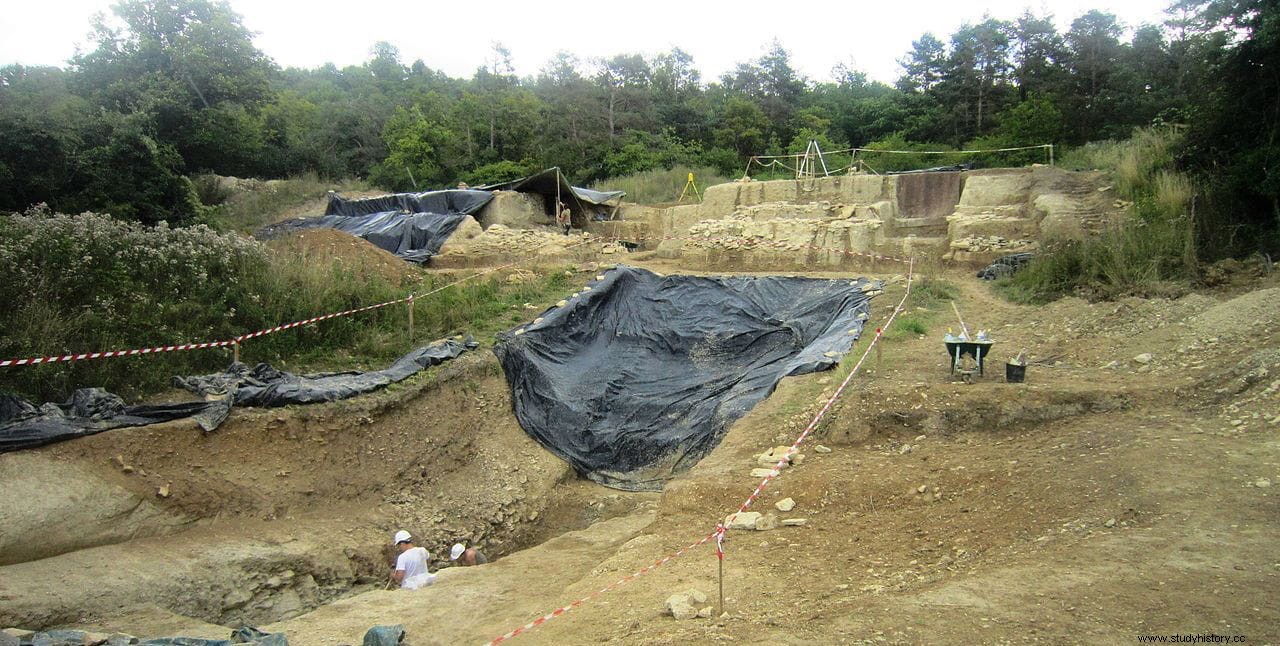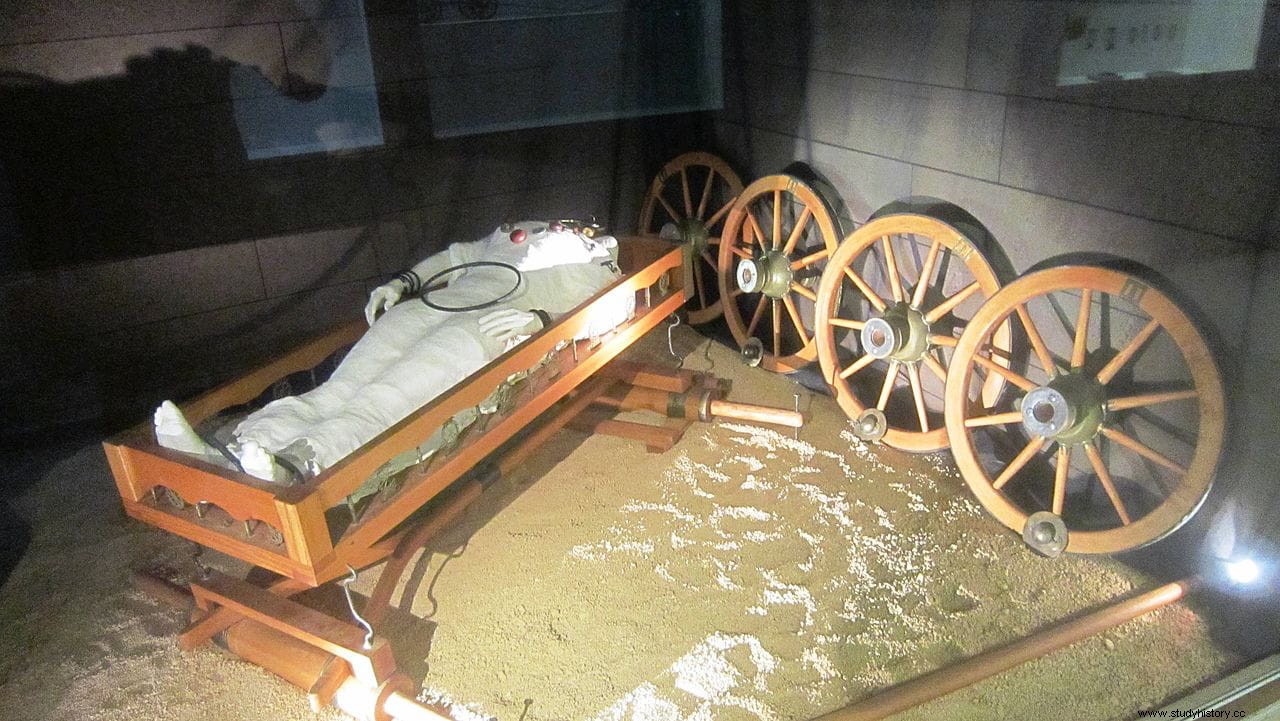On January 6, 1953, a farmer and amateur archaeologist named Maurice Moisson was helping René Joffroy in the excavations he was carrying out at the Mont Lassois fort, near the small town of Vix in northern French Burgundy.
The fortified hill fort overlooked the course of the Seine River and had been occupied since Neolithic times. It was ruled by a female aristocracy in the 6th century BC. and from his privileged position he controlled the old tin route between the Italian peninsula and the British Isles, collecting taxes from the merchants who passed through there.
A nearby burial mound caught Moisson's attention and he alerted Joffroy, who began excavation of the mound the following day. Inside they discovered one of the most fabulous tombs in the Celtic world under a vault of about 4 square meters, originally covered by a mound of stones and earth 38 meters in diameter and approximately one meter high.

It housed the remains of a woman of about 30-35 years who died in the 6th century BC. and whose body had been arranged on a ceremonial chariot, with wheels decorated with bronze appliqués. The woman wore numerous jewels, a necklace of large stone and amber beads, bracelets, torqués and bronze brooches, indicating that she may be a princess or a priestess.
It is a burial from the final period of the Hallstatt culture, belonging to the Iron Age (end of the 6th century BC), which spread throughout Central Europe, France and the Balkans. The tomb had never been disturbed and was found intact.

Among the treasures it contained was a vessel of Greek origin, which is now known as Krater of Vix and that stands out for being the largest bronze vessel from Antiquity that has survived to this day. As we saw in the article on the Riace statues, very few bronze works of art from Antiquity have survived.
The Vix krater is 1.64 meters high (for comparison, the princess it was found next to was 1.60 meters tall) and has a maximum diameter of 1.27 meters. It weighs an incredible 208 kilograms, which makes researchers think that its function was different from the Greek ceramic pots (which were used to mix wine and water) and could contain 1,200 liters of liquid.
In fact, this krater has been compared to the cauldrons used by the priestesses of some Germanic tribes to collect the blood of the sacrifices. And curiously, in the center of the lid there is a small statuette of a woman, about 19 centimeters tall, who looks like a seer or priestess, with a veil over her head and shoulders, and who has one arm outstretched (possibly holding a object now lost).

The statuette is very different from the rest of the krater ornamentation. This lid also has multiple holes, which suggests that it could be a sieve.
The krater, which is archaic in style, is dated to around 520-510 BC. and it was probably made in a workshop in one of the Corinthian colonies of Magna Graecia, in the south of the Italian peninsula. It is made of several assembled pieces and the average thickness of its walls varies between 1 and 1.3 millimeters.

The handles alone, which are 55 centimeters high in the shape of a scroll, weigh 46 kilograms each. They are decorated with smiling gorgons sticking out their tongues.
The neck of the krater bears a frieze, considered a masterpiece of Greek bas-relief, with a representation of eight chariots led by a charioteer, followed by a hoplite each.

Only some 30 years after it was made, the krater was buried in the tomb of the Lady of Vix . It is possible that after that events occurred that caused the memory of what was under the burial mound to be quickly lost, allowing it to be preserved intact until the discovery in 1953.
Today all the treasures found on the site are exhibited at the Musée du Pays Châtillonnais at Notre-Dame de Châtillon.
